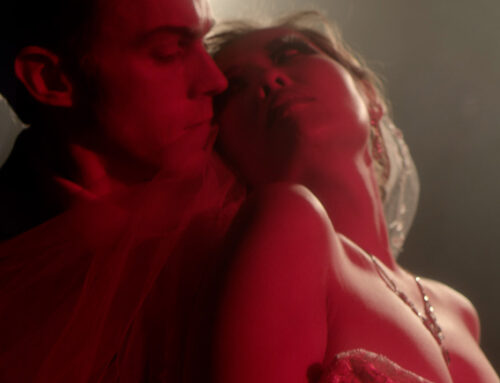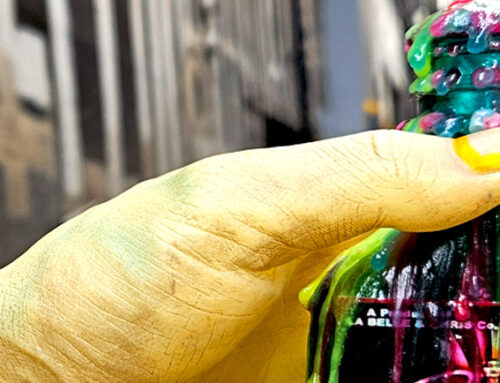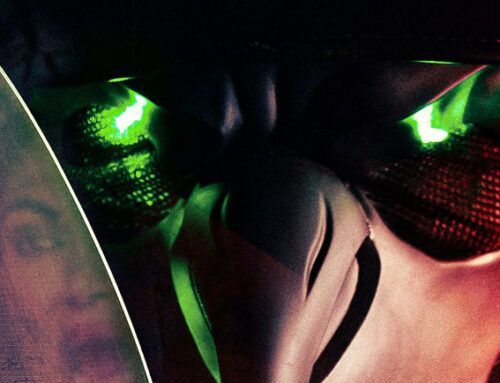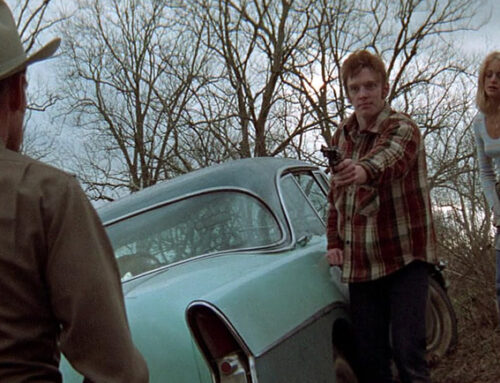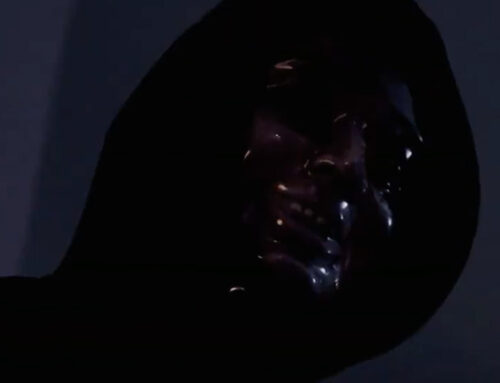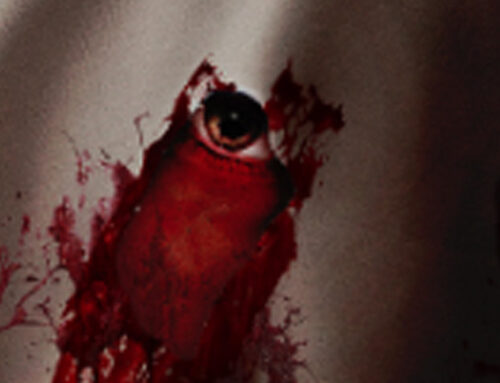Making her feature film debut, Michelle Garza Cervera directed and co-wrote the bone-cracking Mexican horror film Huesera: The Bone Woman.
Huesera follows Valeria, a young mom-to-be, and her husband as they prepare for their new baby. While this should be a happy and exciting time, Valeria is haunted by a mysterious evil supernatural force driving her to her breaking point, as she struggles with her fears and the unrealistic expectations of motherhood forced on her by her family and culture.
After premiering at the Tribeca Festival in 2022, it won the festival’s Best New Narrative Director Award and Nora Ephron Award. It was praised by Variety, Rue Morgue, as well as horror icon Mick Garris on Twitter as “Very original with terrific performances.” Huesera was the 11th highest-rated horror film of 2022 on Letterboxd.
Garza Cervera shares with us her film and music influences, important symbolisms in Huesera, and her future projects.
Bonilla: Who are some of your favorite directors?
Garza Cervera: I have many influences. I love Lynne Ramsay and Lucrecia Martel. Their films are amazing and they’re such great filmmakers.
Watching this film, I immediately thought of Rosemary’s Baby, Jacob’s Ladder, They Live, and Eraserhead. Where these films influences on the film?
I can’t believe you just said that! They Live is in my top three films ever! I’m obsessed with that film. I even collect things of They Live. I care a lot about an anti-capitalist kind of worldview. I really want to put that in my films. And I feel like it’s kind of hidden in Huesera. I love that you see that reference because I do identify a lot with what They Live says.
Other films that were very referential to Huesera were Jacob’s Ladder, and Don’t Look Now, Possession, The Babadook, and the Roman Polanski Apartment Trilogy. All of those films, we analyzed them with the cast and crew for many months before the shooting.
What are some of your favorite horror movies?
There’s so many. Alien is a huge one. It feels like it’s the perfect script. It’s so clever in many ways. And it’s so scary. At the same time, it manages to make the perfect kind of mix between sci-fi and horror. I love Alien.
Don’t Look Now I also find something super scary in that film. I think it has to do with the craft, like the way it’s done. How the context around the characters is completely terrifying. It’s kind of romantic in the sense that it really expresses a very complex emotion regarding loss and mourning for a loved one, in a perfect kind of way.
There’s such a strong influence of punk in the film. Who are your biggest punk influences?
I love The Lemonheads. I even spoke to Michelle Gonzalez [the author of The Spitboy Rule]. She read the script of Huesera because I wanted to ask her if she was okay with having her book there. You don’t see it, but in the flashback, Octavia is wearing a jacket, and she has a Spitboy back patch on her back. It was my jacket for so many years. Those two definitely are big influences on me.
When I discovered that bands like The Bags and The Brat existed, with very strong Mexican or Latin American women in punk, in some of the best punk bands ever. I was very impressed, back when I was a teenager. Also, Los Crudos was the best show I’ve ever been to in my life, in Tijuana. It was wild, really wild.
This is why music is important. It’s not about the technical aspects of it. Punk, to me, is such a strong community. It has its good side. It’s not perfect, of course. It’s like a reflection of the world itself. To me, it really holds a community that makes you feel less lonely in the world. It opens the door. That’s why I also gave that aspect to the characters of the film.
To say that there are other ways of relationships or building a family in that world. It’s been very inspiring for me my whole life. It was important for me to bring it to my first feature as well.
How did you meet your co-writer Abia Castillo and decide to write this film with her?
It was very special because we worked together in a company that used to make video mapping shows. We took a bus to Acapulco and had to sit together because we were traveling. She saw that I had a Love and Rockets comic book on the lock screen on my phone.
She was like, “No way that you like Love and Rockets!” She’s a huge Love and Rockets fan. Then we started talking a lot about Love and Rockets. We had to share a room as well in that work trip.
We started talking about stories, our scripts, and really connected. Since then, we’ve had many projects together. She’s one of my best friends as well.
Color plays a strong part in the film, especially with the very yellow nursery. Was the color a positive or negative omen?
It was an inspiration from the short story The Yellow Wallpaper. The character in the short story has kind of the same conflict [of Valeria in Huesera]. She’s a mother having hallucinations with the wallpaper in her baby’s room. For us, it was really the inspiration. I think maybe that’s why Polanski picked that color in Rosemary Baby, because of that short story.
With the cinematography, we really wanted to portray a harmonic and pastel kind of color world horrific. Then, the punk world in the classic dark colors is actually very liberating. That’s where Valeria feels the happiest. We wanted to break those rules and make the pretty harmonious familiar world terrifying.
The baby’s blanket, which is green, with a yellow trim, resembles the color of Our Lady of Guadalupe. Was that the reference, or did they represent something else?
Yes, it was for Our Lady of Guadalupe. It’s the colors of her blanket. The baby blanket has a spider stitch. If you see that blanket, we burned it. It was symbolic that we burned the prop. It was all very symbolic. There was a reason for everything.
In the scene where Valeria is setting up the nursery, she has a box of carpentry and a box of punk that she’s shoving in the closet. Was she trying to push her past away, for her new life? What did that represent?
Yes, it’s Valeria’s closet. For example, punk, there’s a certain idea that it’s something for when you’re young, a teenager. You have to grow up and stop being a punk, which to me is very sad. I have friends that they’re in their 60s and punk rules their life. It’s a philosophy. It doesn’t have to be about youth. You don’t have to take away that to your past.
Being vulnerable, I’ve done it myself. There’re certain aspects of me that I feel like sometimes to fill a box, like a professional box or a family box, you have to hide certain aspects of something that you love, or believe of the world. When actually no, that’s your personality. You should embrace it.
I wanted to give that to Valeria. She has this Eric Drooker illustration which really speaks about the rooted violence against women is systematic. She doesn’t want to look at it, while Octavia has it framed on her wall. I wanted to show that kind of contrast of how something is within yourself, but even if you frame it, and you’re proud of it, or you have it wrinkled in a closet, you decide how to hold that.
The pile of bodies was visually stunning and reminded me of Alucarda. How did you create that scene?
Honestly, sometimes budget problems are a blessing. We didn’t have money. I’m not the kind of director that would create a 3D monster. It’s not something that I’m very interested in. I think it’s important to show the poker cards at a certain point in the film. You can’t hold it for the whole thing. I feel like there’s this expectation of “Show me the monster!” With Huesera I wanted to do it.
It was the rewrites that took us to the place where understanding how La Huesera should work for this film. And then understanding the biggest moment of La Huesera [the bone woman]. When I got the image of the pile of female, fractured bodies, I thought, “This is amazing. This is something that I can film.” I don’t need a lot of VFX money or something like that.
We contacted an amazing choreographer from Mexico. His name is Diego Vega. He’s big there in the dancing scene. He was super excited because he loves horror, body horror. We had so much fun casting for the dancers. It was a lot of concept talking. He really understood the script. We worked from there.
We filmed it in Chapultepec, which is a very touristy Woods area in Mexico City. You wouldn’t imagine that kind of woods are there, they’re very hidden. It was very crazy that we found something, that to me, looked like a spider web in the middle of the city.
What was the most unexpected reaction that you got from an audience?
I’ve had many conversations after the screenings that have been very moving and very emotional for me. We spent so many years working on a theme and a project that touches on these complicated themes, like women’s roles within families and the nuclear family.
But then, you’re working so much on that, you’re surrounded by people that support abortion. I almost don’t have people around me that have very different political views, which is sometimes kind of complex. You can start thinking this is something that everybody now should understand. But then at the screenings, you see so many people being so impressed by something they’re feeling, that it’s finally being said. Or that they are saying, “Oh my God, I thought I was alone in this.”
I’ve had reactions of women that are in tears saying, “Thank you. I feel like it’s something that I was very ashamed of. It was finally portrayed on a big, huge screen in a packed theater.” I feel very grateful for that representation. I feel like it gives sense to the whole point of making the film.
Why do you think horror is the best way to tell this story?
Horror allows you to reflect on daily life in ways that are very hard to speak of in common life. I feel like for some concepts that I wanted to explore with Huesera, you need to write a ten-page essay. It’s so complex and touches on so many political aspects.
With horror, you can create one image or sound of a bone fracture. Then, you can give a faithful portrayal of a feeling, or a very complex emotion. That’s super generous of the horror genre.
I noticed as a fellow Mexican that Mexican women can have a hard time talking about our fears, or unrealistic expectations of motherhood. Why was that so important to put in Huesera?
It was a family thing for me because there was a dark figure in my family regarding a woman that was dissident regarding her domesticity. I had an evil idea of her growing up. Then I became a feminist and a punk. I was a rebel.
After I lost my mom, I thought, “Wait a minute, who was she? Who was my grandmother?” I started asking those uncomfortable questions that nobody wanted to ask. Finally, I got access to the story.
The Huesera story is not about her, but about the process of giving light to these kinds of characters that are hidden, which inhabit every home. Maybe not to the extreme aspect of a woman that left, but every woman. We go through so many panic attacks regarding this theme that sometimes is so normalized that it’s hard to speak up. For me, we have to give space and light to these emotions and characters. They have to exist in the portrayal of humanity.
Why do you think so many Latinos love and gravitate toward horror?
There’s a big thing going on with Catholicism even if we’re not Catholic anymore. I stopped being Catholic when I was a teenager, but that’s what I tell myself. I feel like it really runs in my veins.
Catholicism is really horror based. And also in our culture. I also don’t understand why there’s not more Latin American horror films, because I feel like it’s all around. The way they teach us stuff like guilt and punishment is the way that we are educated. I feel like we’re a fearful culture. When there’s a portrayal of that, it’s instinctual, and hard to express in words.
I feel like you immediately have an attraction to it, saying, “Oh my God! This is all these dark things that I can’t speak outside of the movie theater, but they’re portraying here”. There’s something very liberating there. It feels like freedom. To me, horror is about wanting to survive. It has a very positive aspect.
Do you have any projects coming up?
Yes, I do. One that I’m very proud of and that is coming out soon is a reboot of Hora marcada, which was this TV series in the 1990s where Guillermo del Toro and Alfonso Cuarón started. Vix+ is putting out the TV series. We are nine Latin American horror directors and each one of us wrote and directed one of the episodes.
Honestly, they were very supportive. They let me write my own episode and I directed in my own way. The lead role is Mercedes Hernández, the aunt from Huesera. I’m very happy with that. I haven’t watched the other episodes, but I’m sure they’re gonna be great. I think it’s gonna be out on Vix+ in April.
I’m also about to film my next feature, which is a little bit more in the cosmic horror area. It’s also going to be filmed in Mexico.
Huesera is currently playing in select theaters and will stream on February 16th on Shudder.

